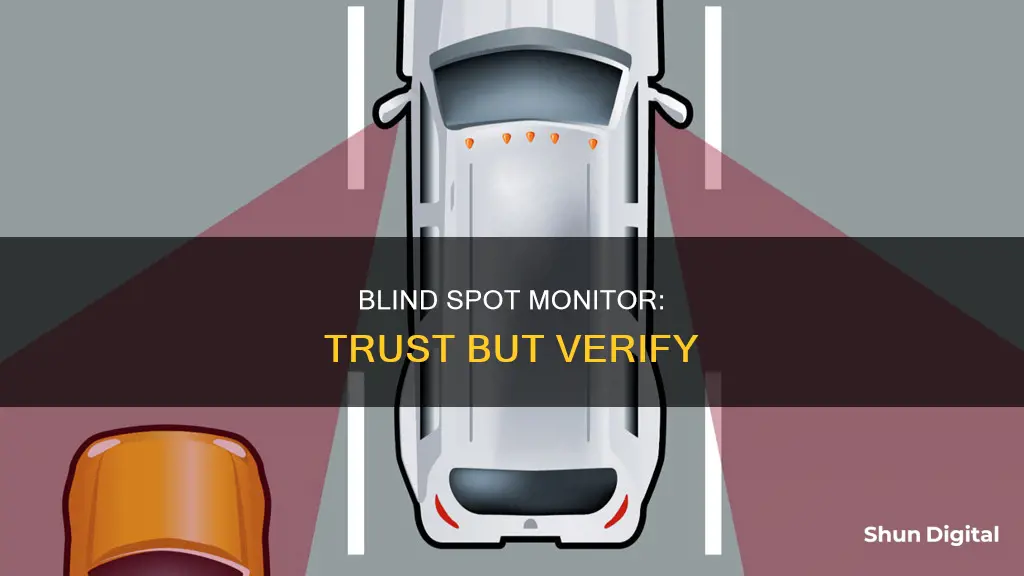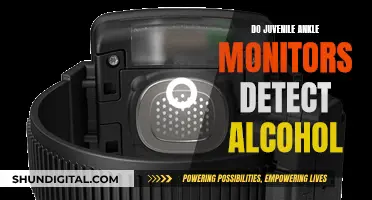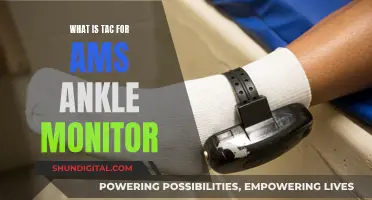
Blind-spot monitoring is a safety feature in vehicles that helps prevent accidents and increases a driver's awareness by alerting them to potential hazards they might not immediately see. This feature is especially useful for larger vehicles with bigger blind spots, and when driving in close quarters. While it is not a mandatory feature, it is available in most modern vehicles and can be added to older vehicles as an aftermarket product. However, it is important to note that blind-spot monitoring systems have limitations and may not always be effective in detecting fast-moving vehicles or motorcycles.
| Characteristics | Values |
|---|---|
| Purpose | To monitor a vehicle's blind spots and warn the driver of potential dangers |
| Function | Uses sensors, cameras, radar, and/or ultrasonic sensors to detect vehicles, objects, or pedestrians in adjacent lanes or the vehicle's blind spot; provides audible, visual, or tactile alerts to the driver |
| Benefits | Increases driving awareness, assists drivers of larger vehicles, prevents crashes, increases response time |
| Types | Blind Spot Warning (BSW), Blind Spot Assist (BSA), Blind-Spot Warning with Automatic Emergency Steering |
| Effectiveness | Studies show a reduction in lane-change collisions and injuries, but may struggle with fast-moving vehicles and detecting motorcycles |
| Drawbacks | May provide alerts too late for drivers to take action, relies on visual cues which can be affected by outside circumstances |
| Best Practices | Drivers should still physically check blind spots, be aware of system limitations, and keep cameras and sensors clean |
| Installation | Can be factory-installed or aftermarket, with the latter being more involved and costing around $200-$500 |
What You'll Learn

Blind Spot Monitors increase driving awareness and response time
Blind spot monitors are an effective way to increase driving awareness and response time. They are especially useful for larger vehicles with bigger blind spots, such as SUVs, vans, or trucks, as they can be difficult to navigate and have limited visibility.
Blind spot monitoring systems use cameras, radar, or ultrasonic sensors to detect vehicles in a driver's blind spot. They then notify the driver through visual, tactile, or audible alerts, allowing them to take appropriate action. These alerts can include illuminating an indicator light, chiming, or even shaking the steering wheel.
The benefits of these systems are twofold: firstly, they increase driving awareness by providing extra coverage and constantly monitoring areas that drivers may not be able to track while driving. Secondly, they increase response time by being more accurate than mirrors, allowing drivers to recognize potential dangers faster and react accordingly. This can be particularly useful when changing lanes or merging, which, according to the National Highway Traffic Safety Administration, accounts for about 9% of all reported vehicle crashes each year.
Research supports these benefits, showing that blind spot warnings can prevent crashes with adjacent vehicles and reduce lane-change crashes and injuries. For example, the Insurance Institute for Highway Safety found that blind-spot detection systems decreased lane-change crashes by 14% and injuries from lane-change crashes by nearly 25%.
While blind spot monitors are a valuable tool, they should not be solely relied upon. Drivers should continue to be cautious, use their mirrors, and check their blind spots manually, as these systems are not foolproof and have certain limitations, such as not functioning properly at lower speeds or in inclement weather conditions.
Monitoring Reserved Instance Usage: Strategies for Cloud Cost Optimization
You may want to see also

They are especially useful for larger vehicles
Blind-spot monitoring (BSM) is a safety feature that keeps an eye on the space just off the rear quarter areas of your vehicle. These blind spots can hide vehicles approaching in an adjacent lane, which can result in a crash when merging. The larger the vehicle, the bigger the blind spot.
BSM is an active driver aid that can detect what the driver's eyes may miss, issuing a warning as a vehicle approaches in an adjoining lane. It is especially useful for larger vehicles, as it can decrease stress levels by keeping track of unseen areas surrounding the vehicle.
Aftermarket blind spot monitors can be installed in older vehicles that are not equipped with this technology. These systems can increase driving awareness and response time, alerting drivers of potential hazards that they might not be able to see.
While BSM can be extremely reliable and accurate, it is important to remember that it should not be solely relied upon. Drivers should still check their mirrors, signal, and move over slowly to ensure a safe lane change.
How to Track Printer Ink Usage Efficiently
You may want to see also

They are not a substitute for mirrors and caution
Blind-spot monitoring is a useful feature that can help prevent accidents and increase driver awareness. However, it is important to remember that these systems are not a substitute for mirrors and caution. While they can provide valuable assistance, drivers should not rely solely on blind-spot monitors and must continue to follow best practices for safe driving.
One reason why blind-spot monitors should not be the only means of checking for hazards is that they have limitations in detecting fast-moving vehicles. Studies have found that alerts may be provided too late for the driver to take action effectively. For example, an American Automobile Association (AAA) study found that blind-spot monitoring systems struggled to detect fast-moving vehicles, and alerts were often delayed. This delay could be dangerous when merging onto a busy highway or changing lanes, as the system may not provide a timely warning of an approaching vehicle.
Additionally, blind-spot monitoring systems may have difficulty detecting smaller vehicles, such as motorcycles. The AAA study also revealed that motorcycles were detected 26% later than passenger vehicles, creating a potential hazard for motorcyclists and other road users. This limitation underscores the importance of using mirrors and visually checking blind spots, especially when larger vehicles with bigger blind spots are involved.
Furthermore, external factors can affect the effectiveness of blind-spot monitoring systems. For instance, bright lights or inclement weather conditions can impact the sensors and cameras used in these systems, reducing their accuracy. Relying solely on technology in such situations may give drivers a false sense of security, leading them to overlook potential hazards.
It is also worth noting that not all blind-spot monitoring systems are created equal. Some systems may only function at certain speeds or have other limitations, such as not recognizing pedestrians, cyclists, or pets. As a result, drivers must be aware of their system's limitations and not assume that all potential obstacles will be detected.
While blind-spot monitoring can be a valuable tool, it should be used in conjunction with, not as a replacement for, traditional mirror checks and cautious driving practices. By adopting a comprehensive approach to safety, drivers can maximize their awareness of potential hazards and make more informed decisions on the road.
Creative Ways to Utilize Your Spare LCD Monitor
You may want to see also

They are now available across the market, not just for luxury vehicles
Blind-spot monitoring systems are becoming increasingly common in vehicles across the market, not just in luxury vehicles. Automakers such as Toyota, Lexus, Nissan, Ford, Tesla, Audi, BMW, Hyundai, and Kia offer blind-spot monitoring systems as a feature upgrade. The cost of the technology has decreased, making it more accessible for car buyers.
Blind-spot monitoring systems use sensors, sonar, radar, and lidar technologies to detect approaching vehicles in adjacent lanes. The system then alerts the driver through an audible or visual warning, such as a chime or a light in the side-view mirror. Some systems also provide a live video feed of the blind spot, displayed on the infotainment screen or instrument cluster. These systems can be found in various vehicles, including hybrids, compact sedans, and full-size sedans, with options available for budget-conscious and luxury car buyers.
For those with older vehicles that lack built-in blind-spot monitoring, aftermarket blind spot monitors are a perfect addition. These systems can be installed by professionals or even by the car owner themselves with some research and basic tools. Aftermarket blind spot monitors can increase driving awareness, assist drivers of larger vehicles, prevent crashes, and increase response time by alerting drivers of potential hazards in their blind spots.
While blind-spot monitoring is a valuable tool for drivers, it should not be solely relied upon. It is important for drivers to remain cautious and continue checking their blind spots manually, as the technology may not always detect fast-moving vehicles or motorcycles. Additionally, external factors like bright lights can affect the driver's ability to notice visual signals from the system. Therefore, blind-spot monitoring should be used as a supplementary feature to enhance driving safety, rather than a replacement for cautious driving practices.
Adjusting ASUS Monitor Brightness: A Simple Guide to Reducing Screen Glow
You may want to see also

They are not foolproof and have some limitations
Blind-spot monitoring is not foolproof and has some limitations. Firstly, it may struggle to detect fast-moving vehicles, with alerts being provided too late for the driver to take action. This delay could be dangerous when merging onto a busy highway. Additionally, these systems have been shown to detect motorcycles later than passenger vehicles, with a 26% delay in detection time.
Furthermore, since most blind-spot monitoring systems rely on visual cues in the driver's side mirror, bright lights or other factors could affect the driver's ability to notice the signal in time. Similarly, audio cues, such as beeping, may only be activated when the turn signal is on, which could be too late to avoid a collision.
It is also important to note that not all systems are the same, and some may only function at certain speeds or with certain vehicles. Many systems do not recognise pedestrians, cyclists, or pets, so drivers must remain vigilant in these situations. While blind-spot monitoring is a valuable tool, it should be used in conjunction with other safe driving practices, such as checking mirrors and blind spots before merging or turning.
Best Places to Buy PRGR Launch Monitors
You may want to see also
Frequently asked questions
A blind spot monitor is a safety feature in vehicles that uses sensors, cameras, radar, or ultrasonic sensors to detect objects or vehicles in a driver's blind spot.
Blind spot monitoring systems use sensors or cameras mounted on the side mirrors or rear bumper of a vehicle to detect objects in adjacent lanes. When the system detects something, it alerts the driver through visual or audio warnings.
Blind spot monitors increase driving awareness, assist drivers of larger vehicles, prevent crashes, and increase response time by alerting drivers to potential hazards.
One drawback is the system's difficulty in detecting fast-moving vehicles or motorcycles. The alerts may be provided too late for the driver to take action, especially when merging onto a busy highway.
While blind spot monitors are a valuable tool to enhance driver awareness and safety, they should not be solely relied upon. It is important for drivers to actively check their blind spots and follow best practices when changing lanes or turning. Blind spot monitoring systems are meant to assist drivers, but they are only as good as the driver's own vigilance and safe driving practices.







